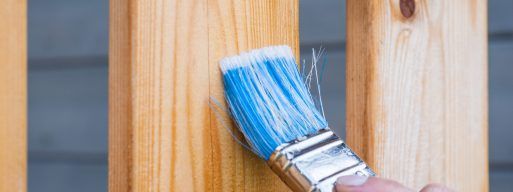Patio & Deck Maintenance Tips to Prepare for the Winter Season
Your deck is an extension of your home. And since you probably take the time to winterize your home each year, you should also winterize your deck or patio.
The long winter season can cause costly damage to your deck, from mold and mildew to stains and rot. And the last thing you want to see come the first warm days of spring is extra work and expenses before you can enjoy your patio.
So instead of giving yourself more work next year, take a bit of time now to prepare your deck for winter. It will be worth it when you can start enjoying your deck immediately next spring.
Here are tips on how to maintain a wood deck for the winter, increase its lifespan, and prevent expensive repairs next year. And even if your decking material isn’t wood, many of these tips will still help winterize your deck.
1. Clear the Deck
Clear off your deck or patio as much as possible for the winter. Not only will this make it easier to shovel snow off your deck, but it will also prevent marks from forming on your deck over winter from uneven weathering.
Clean, cover, and store your patio furniture and your BBQ. Remember to bring in planters and potted plants—especially ceramic pots that could crack in the freezing winter temperatures. Moisture underneath potted plants and planters can also cause discolouration, decay, and mildew growth on your deck over the winter.
But before bringing in plants, make sure no pests are living in them, and also make sure your plants are not toxic for your pets.
2. Inspect Your Patio or Deck For Damage
Thoroughly inspect your deck or patio for signs of damage. Check all areas, including the slats, posts, and railings for warping, cracks, loose nails, and rot.
For wood decks, check for soft wood. If you go to hammer a loose nail or tighten a screw and it either sinks into the wood or splits the wood, then you’ll need to replace the rotted wood piece.
3. Trim Overhanging Branches
If heavy branches are hanging over your deck or patio, determine if they are stable enough to withstand the weight of ice and snow. Trim back branches you’re unsure of, especially if they appear weak or dead. A large fallen branch could damage your deck or home in winter, so you’re better off preparing for the worst.
4. Sweep
Sweep away all dirt and debris from your deck, including leaves. If debris is left on your patio or deck for the winter, it can cause stains and mold, mildew, fungus, and algae growth.
5. Wash
Use mild soap and water to wash your deck. For hard-to-clean dirt stains or mold, use a pressure washer. But make sure it isn’t on too high. While pressure washers are excellent for removing all dirt particles, a high setting can cause damage to your deck.
For older wooden decks, use a bleach-free cleaner to fade stains without yellowing the wood. Follow the manufacturer’s instructions and protect any nearby plants from runoff by wetting them before using the cleaner.
Mildew can be hard to remove, but you must remove it to ensure it doesn’t grow throughout the winter. So use a mildew-specific cleaner if the other cleaner doesn’t work.
6. Test the Sealant
To make sure your deck will repel moisture all winter long, do a water test to test the sealant. Lightly spray your deck with a hose on a medium spray. If the water beads up and pools on top of the deck, then the sealant is still working.
But if water soaks into the wood in some or all areas, then you’ll need to reseal the deck. You can either spot treat the areas that need sealant, or reseal the entire deck for a complete deck restore.
Also, if you notice water pooling in divots in the wood, you may want to replace this wood before winter since this type of pooling for a prolonged period of time can lead to rot.
7. Apply Water Repellant and Sealant
Along with the water test, grey or discoloured spots on a wood deck are signs that water is seeping into your deck. You need to restore a deck with a sealant to protect it from the moisture and freeze-thaw cycle of the long winter season.
Once any necessary repairs are completed and your deck is clean, lightly sand the surface of your deck. This will remove any extra dirt and allow for the sealant to penetrate the wood. After sanding, vacuum the deck with a shop vac.
Use a water repellant sealant on your deck. When shopping for this sealant, make sure it is the right type for the wood finish of your deck. You can use a large brush to apply the sealant to all the surfaces and edges of the wood deck.
8. Remove Snow Regularly
Clear off snow from your deck regularly over the winter. This will reduce fading and damage from snow and ice buildup. Ideally, you will use a snow blower to prevent damage to your wood deck. But if you don’t have one, make sure to shovel snow along (in the same direction as) the planks, not against them. When shovelling against the planks, you risk scarring the wood.
By taking these steps to protect your deck for winter, you can take care of this extension of your home and avoid costly repairs next spring. And if you do notice any damage come spring, make sure to address any issue immediately so you can make the most of the patio season next year.


